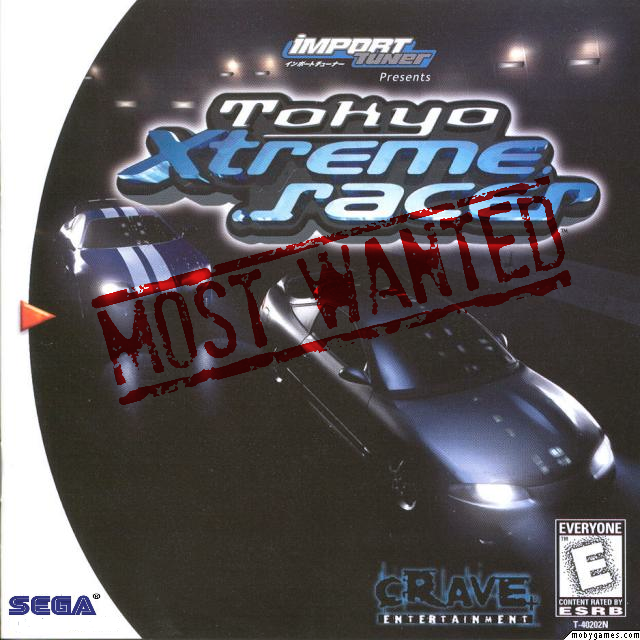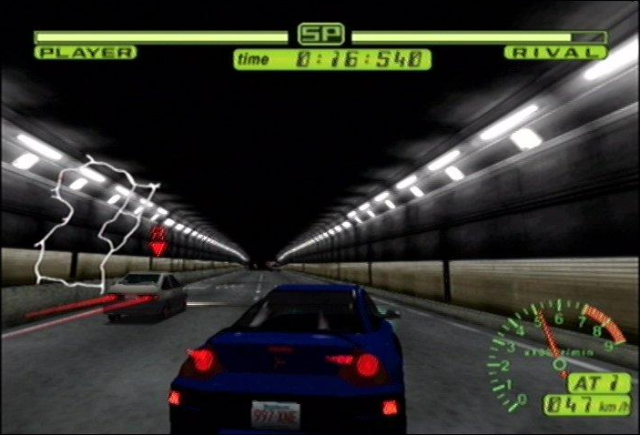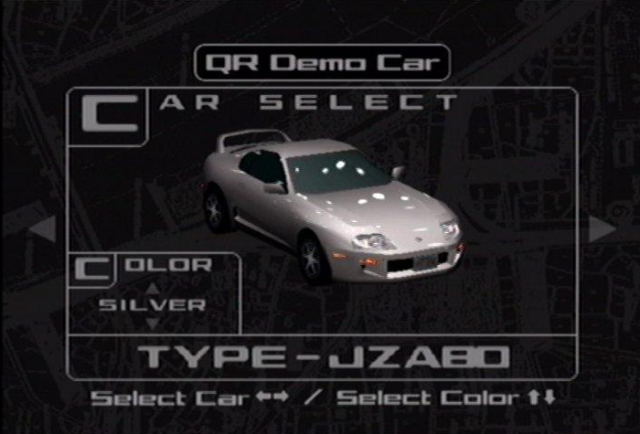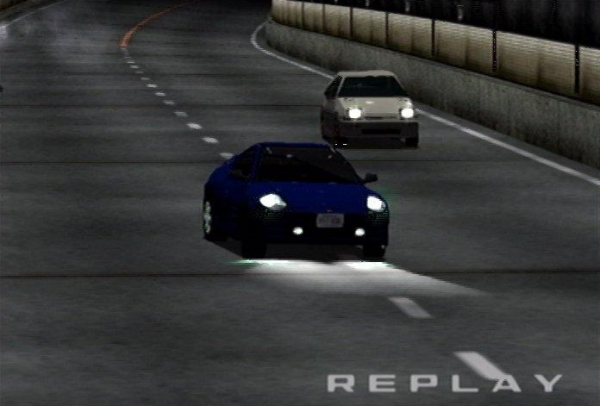XBLA’s Most Wanted: Tokyo Xtreme Racer
It’s the middle of the night, you’re roaming the highway in your supped up turbo-charged Supra, headlights flash in your rear view and, in a blink of an eye it’s on. This is the premise behind Crave Entertainments classic racer Tokyo Xtreme Racer, originally launching for the Dreamcast in 1999. This game had huge aspirations when it launched. Not only were they venturing into new territory as being one of the first mission based games, but they were also introducing a new style of racing that most people didn’t even know existed.
Tokyo Xtreme Racer broke the mold in many ways for the racing market, introducing a huge line of non-licensed look-a-like vehicles and aftermarket parts. Everything here was customizable: rims, body kits, wings, paint, ride height, gear ratio-giving you an amazing since of realism and depth. Sure, today this seems standard, but for the late 90’s this was huge. About the only thing this deep was Gran Turismo, which was exclusive to PlayStation. It was one of the 20 or so titles available for the Dreamcast at launch. It completely stood out against all the other racers that launched, including the hugely loved Hydro Thunder. Let’s jump into the drivers seat and see why Tokyo Xtreme Racer is on the Most Wanted list.
What should change:
Sound effects – When Tokyo Xtreme Racer launched the in game sounds-engines, collisions, turbos-where lacking, even for then. They were by no means the worse but, would not stand a chance against anything that is on the market today. A little bit of fine tuning and some actual live recordings to compare it to would take things a long way. These are small things that really make a huge difference in whether a racer feels right or not.
Graphics – A little bit of polish to the cars would be nice, but where it really needs an overhaul is the background. You are in Tokyo, yet as far as you are concerned minus a few sky scrapers and we could be racing a circle in space. Liven things up, give us more detail to the things that are passing by, sure they are going by at a 100+ mph, but shouldn’t it be a pretty blur. Another piece that needs to be addressed is vehicle damage, as there is none.
Multiplayer – The original was limited to two player split-screen action only, with only two modes. One mode allowed you to race the entire highway, which is cool as there are many options on where you want to go and has plenty of room for comebacks. This thing needs a huge LIVE overhaul, giving it a new battle style system, with multiple modes. Now this is isn’t to say we want the local play excluded, just that it could be vastly larger across Xbox LIVE. Could be pretty cool to cruise a track and know the car you are flashing is a real person driving it. Although it somewhat feels real, unlike the real thing, this is legal and you can talk to them through your head set!
A.I. – The enemies here after a while became very predictable, making it easy to guess what the opponent was going to do, quickly giving you the upper hand. This greatly changes the focus to which car is faster, rather than who is the better driver. Although on occasion, it was all about the skills, speaking of skills, weaving through traffic should be considered one. Though only on the scarce occasion does the traffic pose a threat or get in the way, never changing lanes or speed, just monotonously driving down their lane. Bystander cars should be something that if not careful, could create a race ending mistake, forcing you to either perfectly surf traffic or pray that luck will see you through every time.
Soundtrack – It does not matter what kind of game it is, puzzler, platformer, dungeon crawler or even a racer, a good soundtrack is key. Fans want music they remember, music that makes them feel the road, the intensity of the race, the excitement of the victory. Tokyo Xtreme Racer never fully succeeds at this, bringing mediocre techno/rock style music to every level. This guaranteed that people either learned to drain it out or went the extra mile and turned it off all together. It is a fast paced, high-octane, risk all racer, the music should reflect that, not sound like everything else on the market.
What should stay the same:
Car names – Although now this series has become big enough that they have licensed all their cars and use their real names, it was once not this way. Cars use to have a name that to some immediately made sense and knew what they were, but to others just felt like it was just Craves way around not paying for a license. As it turns out that was true, they made these cars look almost exactly like what they were supposed to be, and then used the frame chassis code for their names, brilliant. This adds to the depth as each model of a Supra or Skyline has a different chassis number, allowing you to dive just that much deeper into the racer world.
Spec-tweaks – When racing a car one of the many reasons you stick to a specific vehicle is the way it controls. Some people want to stick that corner hard and tight, while others want to slide into it high and loose, both have their ups and downs. No matter how you like to drive, you can tweak everything for just the right response you are looking for, which is great on many factors. You can make that hard to handle car more manageable or tweak out your top speed so you can leave the competition behind on huge straightaways.
Open paths – In Tokyo Xtreme Racer when you are in first, you’re free to roam through whatever exits, overpasses, tunnels, or roundabouts you want. Most racers give you a track or strict course to follow, which is fine nobody really minds. This is similar to how it feels when you are behind in Tokyo Xtreme Racer, as you have to follow the path of the person ahead of you so you can overcome them. This is a fun way to race, being capable of changing each and every time, allowing for amazing replay value in small amounts of area.
Single player – This was a brilliant way at introducing a campaign into a racing game. The Tokyo underground expressway racing circuit-if you will-is broke into several gangs. You must race through the tiers of each gang, proving your driving skills and car abilities are better than theirs. What added to this was that you didn’t just pick a person in line and race, you picked a section of the highway and cruised around looking for them, sometimes picking races with members you were not quite fast enough for. Using life bars to show your distance on somebody was a great way to add a familiar feel to a new style of winning.
Car customization – This was a huge factor back then and is still a huge one now, everyone loves being able to make something feel like their own, no matter what it is. It was all here, not just body kits or rims, but side mirrors, mufflers, hoods, even the headlights if you so choose. This is one of the things that make many games stand out against others, and even by today’s standards it is still very feature rich.
Why it would succeed:
Racer fans are always looking for something to hold them over in-between the AAA titles. This leads fans to try anything with heart, style and a little grit. With a little love both in the form of a small over-haul and continued DLC support such as new highways, cars, customizations or paint kits and we could be talking instant hit. Fans love retail style games at digital bargain prices and they love hearing good games are not just a one-time thing. Every fan dreams of the day when their favorite game gets more content or a sequel; this is a chance for, in a sense, both.





